Driving in rain and ice can be challenging, especially for beginners. Slippery roads, limited visibility, and unexpected skids can make your commute feel like a daunting task. But following some essential tips and precautions can make your drive safer and stress-free.
We will outline 10 essential tips for driving in rain and ice. From preparing your vehicle to understanding black ice, we have covered you. We will also discuss the importance of using headlights and taillights, using proper hand signals while driving, braking and turning safely in slippery or wet conditions, and taking care while driving in wet and icy conditions. Stay safe, stay prepared, and read on for more.
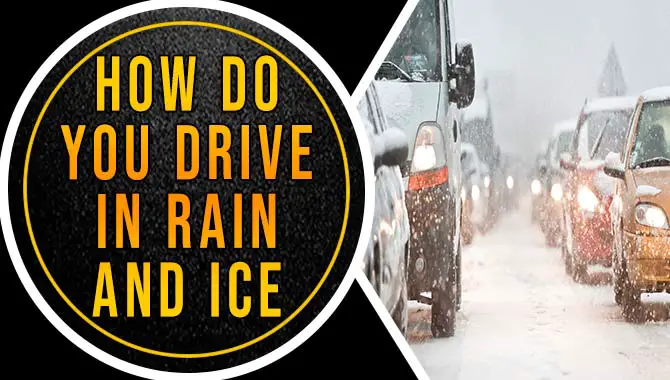
10 Essential Tips For Driving In Rain And Ice
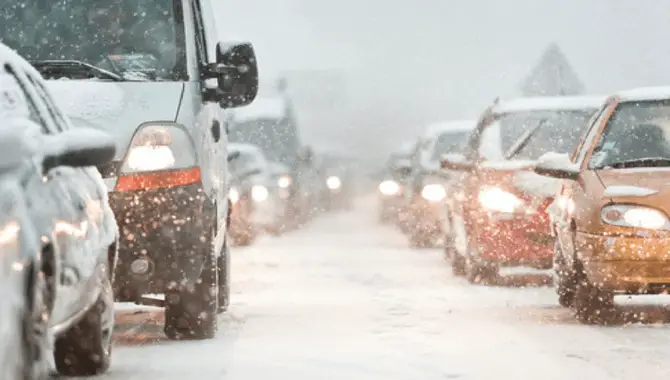
Driving in rain and ice can be daunting for beginners. However, knowing how to navigate tricky weather conditions is essential. To drive efficiently on slippery roads, it is important to increase the following distance to reduce the risk of skidding.
Also, avoid cruise control, which could lead to losing traction on snow or ice. In emergencies, cold weather gear such as blankets, flashlights, and food should be in the car.
Tires should be inflated to the recommended pressure and have increased tire tread depth, which provides improved grip on icy roads. These ten essential tips will help you drive safely in rain and ice.
1. Preparing Your Vehicle For Rain And Ice
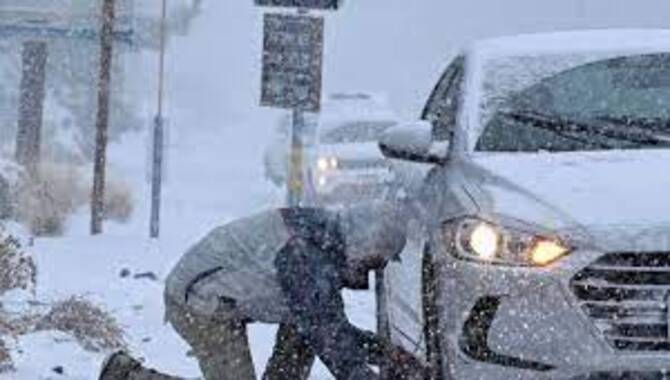
Preparing your vehicle for rainy and icy conditions is key. Have your tires, air pressure, and brakes checked to ensure your vehicle is in proper working order? You may want to equip your vehicle with snow tires or chains when driving on heavy snow or icy roads to prevent your vehicle from getting stuck.
When driving in icy and snowy conditions, refrain from using cruise control. It’s important to drive slowly and smoothly using low revs and shift to a higher gear as quickly as possible. Maintain a greater braking distance between your car and the vehicle in front of you to stay safe.
Before driving in rainy conditions, check your windshield wiper blades and headlights to ensure they function properly. Remember to drive with extra caution in bad weather conditions. With these safety tips, you can confidently navigate through rain and ice while protecting yourself and other motorists on the road.
2. Dealing With Slick Surfaces
Driving in rain and ice can be challenging and requires a few essential tips to ensure safety. Dealing with slick surfaces is one of the most important things to remember.
Drivers should maintain their tires and drive with extra care when it rains or in foggy conditions. To navigate better on slippery roads, reduce speed and disengage cruise control. Increase the following distance to match the road conditions.
Turning on headlights to increase visibility and see the road ahead in low-light conditions is essential. In case of skidding, steer in the direction you want the car to go and avoid sudden braking or jerky movements.
Lastly, never use cruise control on slippery surfaces, as it can quickly cause the car to lose traction. Following these essential tips can make driving in rain and ice much safer and less stressful.
3. Avoiding Hydroplaning
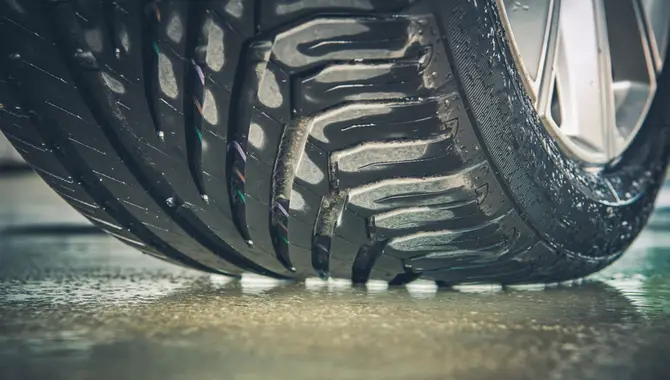
Driving in rain and ice can be challenging for beginners, but several essential tips can help ensure safe travels. One important tip is to reduce speed when driving in wet conditions to avoid hydroplaning. Avoid driving through deep puddles and flowing water, and increase the distance between your vehicle and the one in front of you.
Another important tip to remember is to gently apply brakes to avoid skidding, which can be particularly dangerous on slick roads. Lastly, increasing engine RPM and keeping light pressure on the brakes while crossing wet roads can help dry out the brakes and ensure they are working properly. By following these and other key tips for driving in rain and ice, beginners can stay safe on the road even in challenging weather conditions.
4. Understanding Black Ice
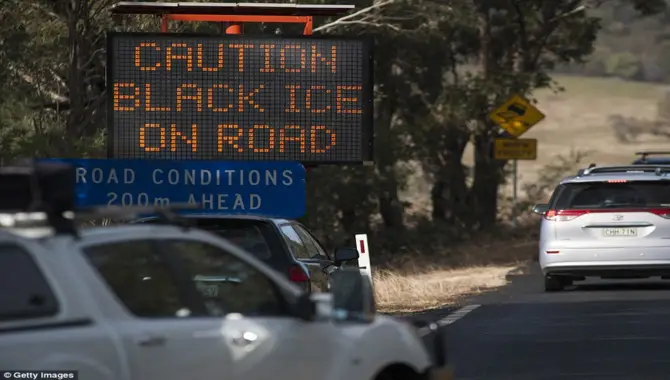
Driving in rainy and icy conditions can be intimidating for beginners, but some essential tips can help. First and foremost, maintain an increased braking distance to avoid skidding. It’s also important to be cautious and ensure your car is properly prepared for adverse weather conditions.
Keeping a bundle of cold-weather gear in your car is also a good idea, including extra food and water, warm clothing, a flashlight, a glass scraper, blankets, and medications.
When driving through puddles or flowing water, it’s important to avoid deep puddles and apply brakes gently to prevent skidding. Additionally, understanding black ice is key.
Black ice is a thin coating of ice on the road that can be difficult to see, and it often forms on bridges and overpasses first. Decrease your speed and avoid sudden manoeuvres to avoid skidding on black ice.
5. What To Do If You Skid
Driving in rain and ice can be challenging, but some essential tips can help you stay safe. One key thing to remember is to slow down and maintain a safe speed. Maintaining a greater distance between your car and the vehicle in front of you can help prevent accidents.
Staying calm and not overreacting is important if you find yourself in a skid. Gently apply brakes and steer straight ahead to prevent hydroplaning. It’s also crucial not to take your hands off the steering wheel or slam on the brakes, as this can worsen the skid. If you’re driving on sheet ice, do not brake, as this can trigger further skidding.
6. Avoid Cruise Control

When driving in rain and ice, it’s important to follow several essential tips that can help keep you safe on the road. One key tip is avoiding cruise control, especially when driving in icy and snowy conditions. Instead, drivers should steer in the direction they want the front of the car to go when skidding and avoid using cruise control altogether.
Additionally, drivers should adjust their speed for lower traction when driving on snow or ice. It’s also important to apply brakes gently to prevent skidding and increase revs per minute.
When crossing water, use light pressure on the brakes. By remembering these tips and avoiding cruise control, drivers can stay safe when driving in rain and ice.
7. Use Low Gear For Better Traction
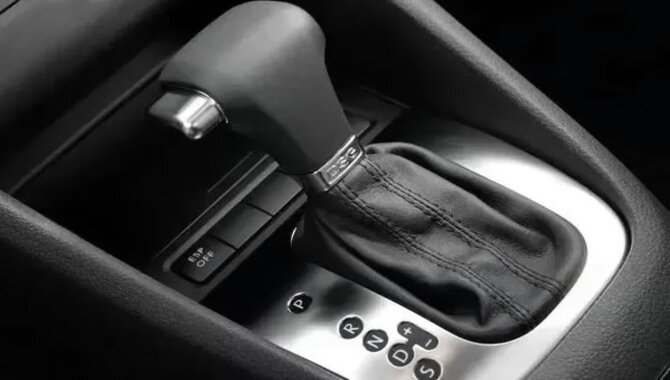
Use a low gear to improve your traction when driving in rain and ice. This can help you maintain control and prevent slipping, especially when going uphill or downhill. Remember to slow down and maintain a safe speed, and avoid using cruise control. Stay calm and gently apply brakes while steering straight ahead if you are in a skid.
8. Keep Your Windshield Clear

To drive safely in rain and ice, ensure your windshield is clear and free of ice or snow. Use your windshield wipers and defrost setting to clear any obstructions, and ensure that your windshield washer fluid is topped up. It’s also important to clear any snow or ice from all windows, mirrors, and lights before starting your journey.
9. Slow Down And Increase Distance
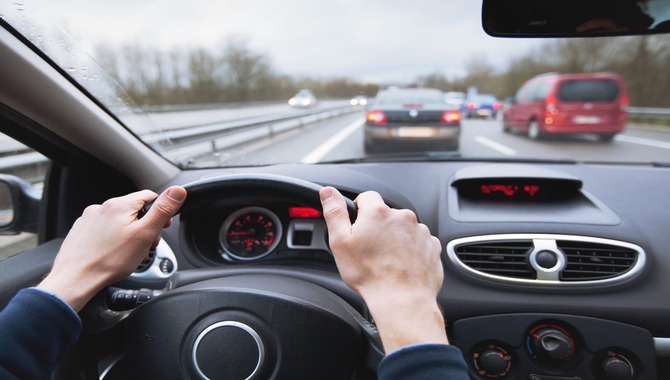
One of the most important things to remember when driving in rain or ice is to slow down. This can help reduce the risk of hydroplaning and give you more time to react to any sudden changes on the road. Additionally, increasing the distance between your vehicle and other drivers can give you more time to stop or react to sudden changes.
It’s also important to avoid driving through deep puddles or flowing water, as this can cause your vehicle to lose traction and cause an accident. Using a lower gear when driving on a hill in wet or icy conditions can also help maintain traction and prevent your vehicle from sliding.
10. Turn Off The Traction Control

The traction control system on your vehicle is designed to prevent you from losing control in slippery conditions by limiting the power sent to the wheels. However, this can cause several issues when driving in rain and ice. First, the system will try to maintain a set speed, which can make slowing down or gaining speed more difficult when on snowy or icy roads.
Second, the throttle will be closed to prevent oversteering, which can affect overall handling and braking effectiveness. Finally, the traction control system is often set too aggressively, causing unnecessary engine wear and damage. To address these issues, turn off the traction control system when driving in rainy or snowy conditions.
The Importance Of Using Headlights And Taillights

Driving in rainy, icy conditions can be dangerous if an individual is not adequately prepared. One of the essential precautions is to use headlights and taillights when driving.
The primary function of headlights and taillights is to allow other drivers to see you, making avoiding accidents easier. It is also important to turn your emergency blinkers on while driving in icy conditions to alert other drivers to your presence.
Reducing speed and being aware of potential hazards on the road are other critical steps to ensure a safe journey. Additionally, wet brakes can cause malfunctioning issues such as poor braking power, pulling to one side, and even wheel lock-ups. Therefore, always maintain an appropriate speed and be cautious on wet roads.
Using Proper Hand Signals While Driving

Driving in rain and ice can be a difficult task, but it becomes easier with the use of proper hand signals. When driving on a wet or icy road, it is important to plan your route accordingly and stay aware of the weather conditions.
Accelerating, braking, and shifting gears should be done smoothly to maximize your vehicle’s traction and control. Maintaining a greater distance between the vehicle in front of you is recommended to avoid sudden stops, and using second gear rather than first gear can reduce the risk of wheels slipping.
It’s also good to be prepared for power outages affecting railroad crossings and signal lights. Use proper hand signals when driving in rain and ice to keep yourself and others safe.
Braking And Turning Safely In Slippery Or Wet Conditions
Driving in rainy or icy conditions can be very challenging, and one needs to be extra careful while operating the vehicle. It is crucial to adjust your driving behaviour according to the weather conditions.
Operate your vehicle slowly and steadily, including brakes, steering, acceleration, and changing gears. Leave an additional braking distance between your car and the vehicle in front of you.
When starting or climbing hills, leave plenty of space in front of the car to maintain a steady speed, and when going downhill, use low gear and try to avoid hard braking.
Apply brakes gently to prevent skidding, and ease off the brakes if the wheels start to lock up. These measures will help you drive safely in slushy or wet conditions and reach your destination securely.
Taking Care While Driving In Wet And Icy Conditions
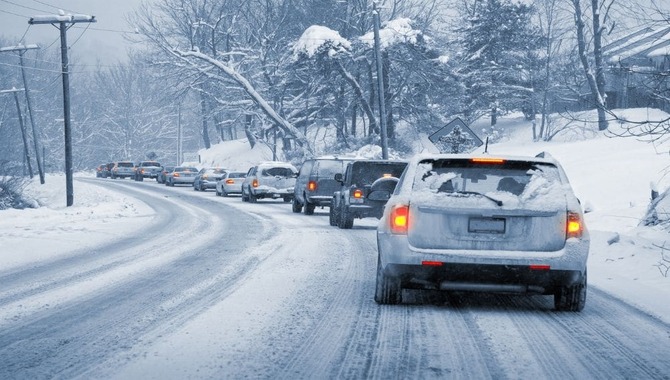
Driving in wet and icy conditions demands extra care than driving in normal conditions. To avoid mishaps, it is necessary to reduce the speed and maintain a safe braking distance between vehicles. One should avoid using cruise control in winter conditions.
Turning on emergency blinkers and driving at a minimum speed on icy roads are key for safe driving. It is advisable to deice your vehicle before driving to prevent any ice from flying off it and ensure proper visibility.
Moreover, using second gear instead of first gear can help reduce the chances of wheels slipping, thereby providing better control over the vehicle. Always be alert and cautious while driving in wet and icy conditions.
Conclusion
Driving in rain and ice can be daunting and risky if you are unprepared for it. To drive safely in these conditions, follow our 10 essential tips for driving in rain and ice. It’s important to prepare your vehicle, avoid hydroplaning, understand black ice, and what to do if you skid.
Always turn off traction control and keep your windshield clear. Slow down and increase the distance between you and other vehicles. Don’t forget to use your headlights and taillights, as they help illuminate the road and make your vehicle visible to other drivers. Taking extra care while driving in wet and icy conditions is important. Driving safely is not only good for you but also
Frequently Asked Questions
Should You Use The Four-Wheel Drive In Freezing Rain?
No, using the four-wheel drive in freezing rain is not recommended. Four-wheel drive can provide better traction in certain conditions but does not necessarily improve braking or steering performance on slippery surfaces.
How Do You Drive In Severe Rain?
When driving in severe rain, it’s important to slow down and increase your distance from other vehicles. Turn on your headlights and use your windshield wipers effectively to improve visibility. Avoid sudden movements or changing lanes frequently to prevent hydroplaning.
How Do You Deal With Freezing Rain?
Dealing with freezing rain can be tricky, creating hazardous conditions on roads and sidewalks. It is important to wear appropriate footwear with good traction and take smaller steps if walking on icy surfaces to stay safe.
How Do You Drive In Heavy Rain On The Highway?
When driving in heavy rain on the highway, staying focused and driving defensively is crucial. Keep your speed in check and maintain a safe distance from other vehicles to avoid water splashes. Turn on your headlights and use your windshield wipers effectively to improve visibility.
Is It Dangerous To Drive In Freezing Rain?
Driving in freezing rain can be dangerous, creating icy and slippery road conditions. This can result in reduced visibility, decreased traction, and increased risk of accidents.
It is best to avoid driving during freezing rain and wait for conditions to improve before hitting the road. Remember these tips when you’re behind the wheel during inclement weather conditions.

